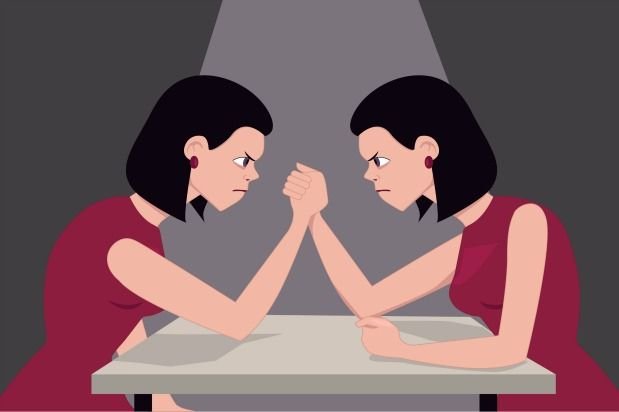Optimism: Can we learn to be 'Sunny'?
As you may have read in my previous blog post, defensive pessimism is a strategy with a lot of potential for those prone to certain levels of anxiety. However, dispositional optimism still holds a lot more traditional advantages to its name; lower rates of depression, reduced risk of cardiovascular diseases, and protection from the common cold to name a few. Companies want to employ positive workers who'll increase efficiency and add to a healthy work environment over more downcast ones. The benefits of being an optimist in today's world are ubiquitous. They might as well sell it in a bottle. Profits would be astronomical. 'The B Positive Serum, the smallest dose will do'.
It doesn't seem fair that pessimists are more liable to a plethora of mental and physical illnesses. So why are some people predisposed to think in a positive fashion while others think in a negative one? Can we change our tendencies to those of an optimist's rather than a pessimist's?
Clinical Psychologist Dr. Martin Seligman explains and highlights the differences between optimists and pessimists by way of Explanatory Style. This rationale can be used to give some insight into the learned helplessness model (Overmier & Seligman, 1967). Some throw their hands in the air and accept defeat easily when faced with an insurmountable challenge while others choose to persist nevertheless. Those who bow out would be labelled as pessimists while those who endure are likely optimists. Our explanatory style is second nature, a default influenced by past experiences that brings us to anticipate similar events in the future a certain way.
Seligman nicely outlines the differences between the two outlooks in his bestselling publication, 'Learned Optimism: How to Change Your Mind and Your Life'.
" The defining characteristic of pessimists is that they tend to believe bad events will last a long time, will undermine everything they do, and are their own fault.
The optimists, who are confronted with the same hard knocks of this world, think about misfortune in the opposite way. They tend to believe defeat is just a temporary setback, that its causes are confined to this one case. "
Positive Explanatory style and Negative Explanatory style induce different behaviours to a certain outcome or situation on three key points; temporary vs permanent, specific vs pervasive, and external control vs internal control. Does the individual believe that the same event or a similar one will not be subject to change or that it will potentially evolve? Do they hold a general contributing factor responsible for the end result or a specific one? Do they credit themselves with the outcome or an independent force?
Prior to writing this blog and doing a bit of research on explanatory style I took a quiz created by Stanford University students. They had adapted a short test of 48 questions from Seligman's book that I thought was fun and gave me some understanding of my 'default setting'. Click here to take the quiz for yourself.
In essence, when a wanted outcome develops, an optimist responds to permanence, pervasiveness, and internal control while a pessimist looks towards temporariness, specificity, and external control and vice versa. Say a sunny person and a cloudy one both received ninety-eights on their English tests. The former would feel energized under the assumption that they'll continue to earn such marks, the affirmation that they're good at English, and that their mark was a direct result of their hard work. The latter would believe that this high-ninety was incidental and not likely to repeat itself, that their success was attributed to their understanding of the individual test subject, and that the questions asked were simply extremely easy.
It seems cruel to be forced under the seemingly constant cloud of doom and gloom that is dispositional pessimism. To fall victim to the learned helplessness model and as a result perhaps succumb to depression. Research suggests that psychological interventions can increase optimism (Malouff & Schoutte, 2016). Dr. Martin Seligman includes a cognitive therapy method known as the ABC's in his book.
Adversity--> The problem/situation encountered
Beliefs--> What you think about the problem/situation
Consequences--> How you face the problem/situation
Using the above acronym you record a problem you've encountered in your daily life, your thoughts surrounding it, and how you reacted to the problem. Seligman also advises those wishing to transition from pessimism to optimism to either distract themselves when pessimistic thoughts make an unwanted appearance or dispute these thoughts. He writes that the technique of disputing them proves to be more helpful in the future. This is because successfully disputed beliefs are less likely to recur.
Of course these strategies can only be implemented if someone is aware of their inclination to think negatively. Pessimists tend to discredit victory, beat themselves up over failure, give in to the helplessness model, and generally see the worst in themselves and others driving them to exhibit selfish and jealous traits. Don't label yourself as an awful person if any of the previously mentioned criteria applies to you. That's all in accordance with your default setting. It's up to you to flip the switch from negative to positive.

:quality(75)/curiosity-data.s3.amazonaws.com/images/content/landscape/standard/bb247952-3aa9-43f8-af0e-05bdc21e6b20.png)



Comments
Post a Comment